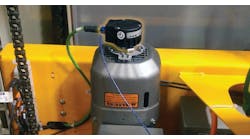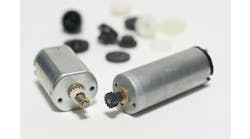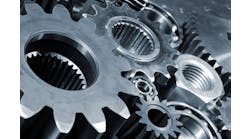A Control Design reader writes: We work with quite a few packaged-goods manufacturers in North America that use multiple conveyance systems. We’ve had some interest from European customers, but we’re worried about differences in standards for motion components from one continent to the other. Specifically, we use a variety of motor starters in our machines and sizing them can be a challenge.
There are always cost considerations, but customers often look for flexible, robust systems, so extra power might be appealing to them. Is anyone seeing a need for more application-specific motor starter designs to reduce energy waste and minimize underutilized capacity?
For some facilities, space is premium, and the smaller design often correlates to lower cost. From an international perspective, should we be paying more attention to National Electrical Manufacturers Association (NEMA) or International Electrical Commission (IEC) standards? Are there any major differences to be aware of?
Also, have post-COVID restrictions or supply-chain issues changed any views on starter standards in the United States or overseas?
Answers
COVID accelerated standards harmonization for IEC-type products
As material costs have risen sharply in the past few years, contactors have not been immune. The amount of metal and plastic it takes to manufacture a contactor is directly linked to the switching capacity of the device. So there has been cost pressure driving design pressure to use smaller devices where appropriate or to use alternative technologies altogether, such as hybrid switching devices. Hybrid switching devices have a much smaller overall footprint and last up to 10 times the service life of a traditional contactor, making it an increasingly popular choice.
Space is money—the sizing of components impacts the enclosure size. The size of the enclosure impacts the size of the machine. The size of the machine impacts the cost of shipping and the cost of raw materials to build it. In short, miniaturization saves a measurable amount money. We will continue to see a push for smaller and smarter control cabinets.
IEC standards are followed by many global markets and are increasingly being accepted here in the United States, as well; Underwriter Laboratories (UL) is working to harmonize many of its industrial-control standards with the relevant IEC standards, as an example. IEC-style components are known for maximizing functionality and minimizing size, while still offering very robust service lives, which is only increasing the popularity of these components globally.
NEMA is primarily focused on the North American market, so many of the standards developed for NEMA-style equipment are typically focused on the North American grid and don’t always take into account international voltages and frequencies. Other major differences are motor and enclosure ratings. While IEC-style equipment can often offer an equivalent in terms of function and performance, the nomenclature found on a motor nameplate or the classification system used for environmental ratings might outwardly look very different owing to the standards referenced when the equipment was designed. IEC motors may use different mounting flanges and mounting points than a NEMA motor of similar performance capabilities, as a further example.
It appears as though COVID simply accelerated two trends that had already started before: harmonization of standards and using cost-effective, readily available IEC-style products. It is cheaper to build one machine for an international market than it is to produce two variations of the same machine, one for domestic customers and one for export. In addition, IEC equipment is sold globally, whereas NEMA equipment is primarily only sold in North America, which generally makes it easier to source alternatives from other IEC markets or manufacturers if availability of a component is an issue.
Clinton Hommel / associate product manager—interface / Phoenix Contact USA





